new posts in all blogs
Viewing: Blog Posts Tagged with: Kingfisher, Most Recent at Top [Help]
Results 1 - 9 of 9
How to use this Page
You are viewing the most recent posts tagged with the words: Kingfisher in the JacketFlap blog reader. What is a tag? Think of a tag as a keyword or category label. Tags can both help you find posts on JacketFlap.com as well as provide an easy way for you to "remember" and classify posts for later recall. Try adding a tag yourself by clicking "Add a tag" below a post's header. Scroll down through the list of Recent Posts in the left column and click on a post title that sounds interesting. You can view all posts from a specific blog by clicking the Blog name in the right column, or you can click a 'More Posts from this Blog' link in any individual post.
Get Into Art: Animals. Susie Brooks. 2013. Kingfisher. 32 pages. [Source: Review copy] If you were going to draw an animal, what would it be? You have so much choice, it might be hard to decide! Animals are a great subject for artists because there are so many shapes, colors, and characters to choose from...Look at the different ways in which animals have inspired famous artists--and then let them inspire you, too! What a fun concept book for sharing art with children! Get Into Art Animals shares twelve famous artworks with children. Facts about the artists are given for each work of art. In addition, there is a recommended hands-on art project inspired by each work. A glossary in the back defines art terms. There's also a list of everything you'll need to do all the projects.
The Snail,
Henri Matisse, 1953
Suspense,
Sir Edwin Landseer, 1861
Crinkly Giraffe,
Alexander Calder, 1971
The Bird,
Georges Braque, 1949
Peacock and Magpie,
Edward Bawden, 1970
Fish (E59),
M.C. Escher, 1942
Carnival of Harlequin,
Joan Miro, 1924-1925
Totem Poles, Wayne Alfred and
Beau Dick 1991 and
Ellen Neel 1955
Yellow Cow,
Franz Marc, 1911
Dragon Wish, Chinese artist 1600-1635
Portrait of Maurice,
Andy Warhol, 1976
Jockeys in the Rain,
Edgar Degas, 1883-1886
The project for "Totem Poles" is "Crafty Totem." Making your own totem pole out of a cardboard tube and paper. But my favorite may just be "Colorful Cats" a project inspired by Andy Warhol.
Colorful Cats
Warhol's silk-screen method was complicated, but you can get a similar effect with a simple stencil.
1. On a piece of card stock, draw the outline of an animal and carefully cut it out. You'll end up with two stencils like these. (Cut out the eyes, nose and mouth on the second stencil).
2 Lay stencil 1 on a piece of thick paper and attach it with paper clips. Sponge yellow paint all over it.
3. When the paint is dry, lift the stencil and move it slightly down and to one side. Sponge red paint unevenly over it and then leave it to dry.
4. Now lay stencil 2 on top of the picture and sponge blue paint over the holes. Leave it to dry, and then remove the stencil. Cut out the animal and stick it onto a colorful background. (You can print whiskers by dipping the edge of a strip of card stock in paint.)
Warhol often repeated his prints in different colors. Try making a set like this. (27)
Get Into Art: People. Susie Brooks. 2013. Kingfisher. 32 pages. [Source: Review copy]Can you think of an art subject that's always around? Just look in a mirror for the answer! Artists often base their work on themselves or other people. Some create portraits to remember people by or characters to illustrate a story. Others capture feelings, actions, fashions, or imaginary faces. The great thing is that people are all different, and artists can bring them to life in many ways. See how people have inspired famous artists--then let them inspire you, too!I have really enjoyed looking at both books in this art-appreciation series. Like the previous book, this one introduces twelve works of art to children. Facts about each artist are shared. Each work is connected to a hands-on art project. A project materials checklist and a glossary are included in the back.
Vertumnus,
Giuseppe Arcimboldo, about 1590
Weeping Woman,
Pablo Picasso, 1937
David,
Michelangelo Buonarroti, 1501-1504
The Scream,
Edvard Munch, 1893
Children's Games,
Pieter Bruegel the Elder, 1560
Portrait of Adele Bloch-Bauer 1,
Gustav Klimt, 1907
A Sunday Afternoon On the Island of La Grande Jatte,
Georges Seurat, 1884
Grotesque Faces,
Leonardo da Vinci, 1500s
Egyptian Burial Mask, Ancient Egyptian craftspeople, around 3000 BC to A.D. 1st Century
Girl in Mirror,
Roy Lichtenstein, 1964
Lawn Tennis,
Eadweard Muybridge, 1887
Las Meninas,
Diego Velazquez, 1656
There are so many great project ideas in this one! I find myself liking the projects better in Get Into Art People than in Get Into Art Animals. I'm not sure why! I like how the project for "David" is teaching proportion in drawing. It shows step by step how to draw a face (and body) in proper proportion. The Mummy Mask looks like so much fun!!! However, the example I'd like to share with you is inspired by the photograph action sequences of Eadweard Muybridge.
Action Snaps
To photograph your own action sequences you'll need a camera and a friend.
1. Decide what movement you are going to photograph. It's best if it's something that can be done slowly. Get your friend to try moving in slow motion and holding each stage of the pose. When you're ready to start, stand at a good distance from your subject so that he or she fills the camera frame.
2. Keep the same distance between you and your friend as you photograph each stage of the action. If your model moves in one direction, you should move too.
3. If you're photographing something quick, like a somersault, get your friend to repeat the movement and press the shutter button at a different stage each time.
4. Print out your photos and arrange them in sequence--or "stitch" them together on a computer. (27)
I would recommend both of these books by Susie Brooks.
© 2014 Becky Laney of
Becky's Book Reviews
In the Rainforest by Claire Llewellyn. 2014. Kingfisher. 32 pages. [Source: Review copy]In the Rainforest by Claire Llewellyn is a level two nonfiction reader published by Kingfisher. Other level two titles include: Fur and Feathers, Trucks, What Animals Eat, Where Animals Live, Where We Live, and Your Body. Level two titles feature longer sentences with familiar vocabulary, engaging pictures, a table of contents, page headings, and a simple glossary. The glossary for In The Rainforest includes these words: canopy, camouflage, equator, mine, nectar, oxygen, poison, prey, and sloth. Level two readers definitely have a different look to them compared to level one readers! They are definitely more complex and focused on sharing even more information.
I liked the page headings. I liked how the two-page spread focused on sharing specific information, and how easy it was to find exactly what you were looking for. I do believe that children need to learn how to use nonfiction books from an early age, and this one will help with that task.
The book focuses on rainforests as a whole: plants and trees, and, of course, animals. It also mentions humans and rainforests: how humans have lived in villages in-or-near rainforests, but, how some humans pose a threat to the survival of rainforests.
Firefighters by Chris Oxlade and Thea Feldman. 2014. Kingfisher. 32 pages. [Source: Review copy]Firefighters by Chris Oxlade and Thea Feldman is a level three nonfiction reader published by Kingfisher. Other level three titles include: Ancient Rome, Cars, Creepy-Crawlers, Dinosaur World, Record-Breakers, and Volcanoes. Level three readers feature short paragraphs with more complex sentences, introduce high-interest specialized vocabulary, include a table of contents, captions, fact boxes, glossary, and index. The glossary for Firefighters include the words: breathing apparatus, cutter, emergency, equipment, fire extinguisher, foam, hydrant, nozzle, pump, siren, smoke detector, spreader, sprinkler, wildfire, and winch. You can tell from the glossary that this will definitely be more complex and informative than any level one or two reader!
From "What is a Firefighter?"
A firefighter is someone who helps in an emergency. A firefighter's main job is to put out fires. When a fire starts, a team of firefighters rushes to the fire. The firefighters use hoses, ladders, and other equipment to put out the fire. They rescue people trapped by fire, too. Firefighters help with other emergencies. They rescue people after accidents such as car crashes. They also help people trapped in floods or on cliffs by the sea. I found this one to be very informative. It even includes a two page spread on firefighters in the past!
© 2014 Becky Laney of
Becky's Book Reviews
Animal Colors. Thea Feldman. 2014. Kingfisher. 32 pages. [Source: Review copy] Animal Colors by Thea Feldman is a level one nonfiction early reader published by Kingfisher. (Other level one readers include Baby Animals, Busy as a Bee, Butterflies, Colorful Color Reefs, Jobs People Do, Seasons, Snakes Alive!, Tadpoles and Frogs, Trains, and Tyrannosaurus.) Level one readers feature short, simple sentences with familiar vocabulary, engaging pictures, and a simple glossary. The glossary of Animal Colors, for example, includes the words: blend, camouflage, hare, mate, and poison.
First paragraph: There are many colorful animals in the world! This grasshopper is bright green. This snake is green too. These birds are pink. This crab is red. So is this ant. This sea star is blue. So is this lizard.
From the opening pages, I thought this book was a bit too simple. At first, I did not find it very informative or interesting. But, as I kept reading, it seemed to become more complex which was a good thing. It began going beyond the basics: this is blue, this is red; here are some spots, here are some stripes. Once it started sharing information--interesting facts, I didn't-know-that-facts, it became easier to recommend.
For example:
Some animals change their colors! This spider is white when it is on a white flower. It turns yellow on a yellow flower. Insects do not see the spider. The spider grabs and eats the insect! 
First paragraph: This is a big, fierce dinosaur! It is called Tyrannosaurus. Tyrannosaurus lived millions of years ago. That is a very long time ago. There were no people yet. Let's go back in time and take a look at Tyrannosaurus!
This early reader takes an imaginative approach to sharing information about dinosaurs. It's what-if scenario is conversational and to some extent enjoyable. "Tyrannosaurus is hungry! He is looking for food. What does he eat? Other dinosaurs! Tyrannosaurus is a hunter" and "Look! Tyrannosaurus runs after his prey. He runs on his toes. His tail sticks out behind him." It does keep the book in the present tense, inviting readers in.
Personally, dinosaur books will never prove interesting or thrilling to me. It's not a subject I care about. But for readers, particularly young readers, this book would be a good fit.© 2014 Becky Laney of
Becky's Book Reviews
Zoo Animals. (Pop & Play). Simon Abbott. 2013. Kingfisher. 10 pages. [Source: Review copy]Monkeys swing through the trees.What noise do they make?Chatter! Chatter!Pandas eat bamboo.Crunch!Peekaboo!Say hello to the tiger.Count the bugs.Roar!Zoo Animals is a pop-up board book. Each spread reveals a fun pop for little ones. Monkeys swing on the vine, for example, and a crocodile opens wide and snaps. The text is simple and direct. It isn't the most amazing text ever. But it works well enough, I suppose. The illustrations are bright and fun. My favorite pages: the monkeys, the tiger, and the crocodiles. (My least favorite spread is the panda.) Your little one would need to be old enough not to pull on the pop-ups. A few rips could take all the fun out of this one. But if your little one is gentle with books, then this one definitely has appeal!
Things That go (Pop & Play) Simon Abbott. 2013. Kingfisher. 10 pages. [Source: Review copy]The racecar whizzes past. What shape are the wheels? Vroom!The digger scoops up dirt. Count the builders.Chug! Chug!The boat bobs up and down.Where is the dolphin?Toot! Toot!Things That Go is another book in Kingfisher's Pop and Play board book series. The focus this time is on vehicles. Some of the movements (the pop-ups) are great. I really loved the last two, the train and the rocket. Others didn't thrill me. The text is simple. But the flow could be a bit better perhaps. Though I think questions that ask readers to interact with the illustrations are good, at least in theory. The book's main appeal may be the pop-ups. They can be fun! For little hands that can be gentle, this one may work.
© 2013 Becky Laney of
Becky's Book Reviews
Who's That...Playing? See How The Animals Play. Kingfisher. 2013. 14 pages.
Who's that playing?
Tip tap
I am a kitten.
I have long fur and pointed ears.
Who's that splashing?
Splish splosh
I am a duckling.
I have a beak and webbed feet.
Who's That...Playing is a fun board book for young readers--toddlers and preschoolers. Each two-page spread focuses on a different animal at play: kittens, puppies, ducklings, bear cubs, lambs, penguin chicks, piglets. Real photographs are used throughout. It is in a series of board books published by Kingfisher. Other titles include: "Who's That? Roaring," "Who's That? Jumping," "Who's That? Eating."
Who's That...Eating? See How The Animals Eat. Kingfisher. 2013. 14 pages.
Who's that eating?
Chomp
I am a giant panda.
I have black and white fur and I like munching bamboo.
Who's that gnawing?
Gnaw
I am an otter.
I have whiskers and I use my tail to help me swim.
If you're looking to share simple animal facts with your little one, this new series by Kingfisher would be a great choice. There are four books in this series, each focusing on a different aspect of animal life. Different animals are featured in each book. In this title, the focus is on eating. The animals featured include pandas, otters, caterpillars, squirrels, anteaters, chickens, and giraffes.
Seek and Peek In the Rainforest. Kingfisher. 2013. 8 pages.
Another series published by Kingfisher is the Seek and Peek series. There are four titles in the series: Seek and Peek in the Rainforest, Seek and Peek On the Farm, Seek and Peek Dinosaurs, and Seek and Peek at the Zoo. The books are oddly shaped, which may appeal to young readers who love to grasp. Readers can choose which animal they want to read about--learn about--and turn directly to that page. But some pages feature more than one animal. And some animals are not featured on the cover.
Seek and Peek On the Farm. Kingfisher. 2013. 8 pages.
The final book I'll be reviewing today is another in the Kingfisher's Seek and Peek series. I'm curious if little hands will appreciate the oddly shaped board book--it is almost a circle. It is easy to grasp and turn pages, which may be a plus! Farm books are almost always fun, and this one isn't an exception. Little ones can learn simple facts about farm animals like pigs, horses, chickens, cows, ducks, etc.
© 2013 Becky Laney of
Becky's Book Reviews

By:
Aline Pereira,
on 10/28/2011
Blog:
PaperTigers
(
Login to Add to MyJacketFlap)
JacketFlap tags:
Gillian Clarke,
Justin Todd,
Random Noodling,
The Whispering Room Haunted Poems,
Poetry Friday,
United Kingdom,
Poetry Books,
Diane Mayr,
Kingfisher,
The Children's Poetry Archive,
Add a tag
 My husband was in Wales recently for a conference and heard Welsh poet Gillian Clarke read there. I knew I’d heard of Clarke; in fact, I found her on The Childrens Poetry Archive website where you can hear her read the poem Legend. I was therefore happy to find at my local library a book of poems edited by Clarke that is very appropriate for Halloween. The Whispering Room Haunted Poems (illustrated by Justin Todd, Kingfisher, 1996) is a collection of poetry chosen by Clarke on the theme of ‘haunting.’ As Clarke says in the preface, “Haunting is all about imagination, and the best imaginers are poets and children.”
My husband was in Wales recently for a conference and heard Welsh poet Gillian Clarke read there. I knew I’d heard of Clarke; in fact, I found her on The Childrens Poetry Archive website where you can hear her read the poem Legend. I was therefore happy to find at my local library a book of poems edited by Clarke that is very appropriate for Halloween. The Whispering Room Haunted Poems (illustrated by Justin Todd, Kingfisher, 1996) is a collection of poetry chosen by Clarke on the theme of ‘haunting.’ As Clarke says in the preface, “Haunting is all about imagination, and the best imaginers are poets and children.”
My daughter and I committed ourselves to reading a poem or two each night out of this anthology (while finishing off The Ogre of Oglefort by Eva Ibbotson!) leading up to Halloween. I find reading poetry with her helpful in teaching her about poetic language and concepts such as rhyme. I let her pick out the poems she would like to try and then we have a go at them. Flipping through the book together, I was quite struck by Justin Todd’s arresting illustrations, some of which drew me to certain poems.
What books are you reading to your child for Halloween? Any good poetry titles? Do share and spread the word! Poetry Friday this week is hosted by Diane Mayr at Random Noodling.
I have seen three kingfishers in my life so far. The first time was one autumn day when I was twenty and visiting my first ever RSPB bird sanctuary in Ynys Hir in Mid Wales. I just caught a flash of turquoise. My next sighting was on another autumn day fifteen years later on an artificial lake in Chingford. Again it was just a fleeting glimpse. On Sunday at Minismere nature reserve in Suffolk just as I was leaving a hide I turned and looked through the window behind me. A kingfisher rose up from the reeds and hovered above the surface of the pond. It was an intense three seconds as my heart stopped and my mind’s eye worked overtime desperately trying to preserve the image. Why did my halcyon moments mean so much to me?
In Greek mythology Alcyone was the daughter of Aeolus the guardian of the winds. When her beloved husband, Ceyx was drowned she threw herself into the sea and was turned into a kingfisher. When she builds her nest at sea Aeolus stills the wind for seven days to keep the next generation of his family safe.
Another legend says that the kingfisher buries her dead mate in the winter before laying her eggs in a nest of fish bones which then floats out to sea. This image makes me remember the pagan myths about the moon goddess carrying the body of the dead king, symbolic of the old year, to his final resting place. Then I find myself in the realm of the Fisher King. The wounded king who is waiting for a knight to return and bring the secret that will heal himself and bring life to his desolated kingdom.
As I write this post I realise that the kingfisher and the stories that surround it have helped me to clarify what is driving my passion to write at the moment. I now understand what the theme is that I am trying to capture and keep. It is hard to put into bare words. It needs a calm sea, a still wind and a story to express it

In Out of Sight, Out of Mind, readers are introduced to Queen Bee meanie Amanda Beeson. Amanda is the stereotypical you-know-what. She is obsessed with labels, clothing and tearing other kids down. She has her own little posse of wannabes, but she makes sure that her position is always in tact. She tries so hard to be who she is that she has little time for pathetic kids like Tracey Devon. She is way too skinny, her plain Jane clothes barely fit her, and she doesn’t even stand up for herself when Amanda ridicules her to her face! Amanda has no idea why Tracey is in the gifted class at school…she’s not even that smart.
What nobody knows, however, is just why Amanda is so mean. If she does allow herself to feel any empathy or sympathy for anyone, she loses herself. She actually slips into the other person for a little while, and she hates how that feels. Thus the armor.
What she doesn’t count on is feeling sorry for Tracey Devon of all people. And then waking up in her body. Amanda feels trapped. She has never totally overtaken somebody before. What is she going to do, and more importantly, how is she going to reclaim herself? This is no Freaky Friday switch…Amanda is still existing as Amanda, she’s simply also existing as Tracey.
When she gets to school in her loser body, Amanda follows Tracey’s schedule and finds that it’s pretty easy to blend in. In fact nobody even seems to see her. When she ends up in the gifted class, she is surprised by the mish mash of kids who are there. What could they possible have in common?
After a clunky start, the story gets going. The haphazard background of Amanda’s prior out of body experiences could probably be left out all together. After that is out of the way, readers will enjoy a slightly supernatural mean girl story. Once introduced to the other kids in the gifted class, readers will wonder what all of the powers are. The ominous warnings of their teacher Madame, will keep them guessing as to who will show up next to try to exploit some of the kids powers. A fun series that will hook tween girls who want something scary and romantic that isn’t too much of either of those things.

By:
Aline Pereira,
on 11/15/2007
Blog:
PaperTigers
(
Login to Add to MyJacketFlap)
JacketFlap tags:
bullying,
Peace,
Picture Books,
Books at Bedtime,
Eventful World,
Glin Dibley,
Allen Shamblin,
Anti-bullying week,
Don-t Laugh at Me,
Operation Respect,
reading to children,
Peter Yarrow,
Raeding Zone,
Steve Seskin,
Steve Seskin,
Add a tag
 Next week is Anti-Bullying Week in the UK, when school-children throughout the country will take part in activities to help them:
Next week is Anti-Bullying Week in the UK, when school-children throughout the country will take part in activities to help them:
“grow up with their respect of self and others intact, be fine participant citizens and, perhaps most importantly, become peacemakers in their hearts.”
This quotation comes from Peter Yarrow’s afterword of a remarkable picture book of Steve Seskin and Allen Shamblin’s deeply incisive but simple song Don’t Laugh at Me. The words of the song have become increasingly familiar since first being written just over ten years ago: but set here with Glin Dibley’s hauntingly expressive illustrations, and with certain words in the text highlighted in red, even young children will be able to respond to it, using their innate sense of justice to pull out the essence of the song’s message.
Be prepared for taking your time over it: each line triggers all sorts of questions and discussion. Reading this book to your own children or to a class of young children is a beautiful way to introduce them to the notion that “difference” should make no difference. They will appreciate the juxtapositions in the illustrations, like the one of the boy in a helmet in a wheelchair – in that order: the wheelchair is actually the last thing you notice.
There’s also a cd at the back and kids of all ages will enjoy listening to the song, performed so gently and meditatively by the song-writers themselves.
Peter Yarrow, quoted above, founded Operation Respect and a percentage of the sales of the book goes to their “Don’t Laugh at Me” project… And there’s also a Spanish edition. Reading Zone has just placed it in in its Top Ten Picture Books. So what are you waiting for?



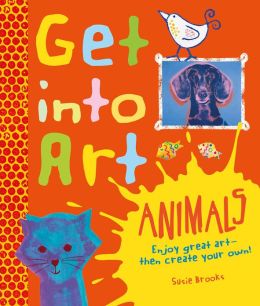



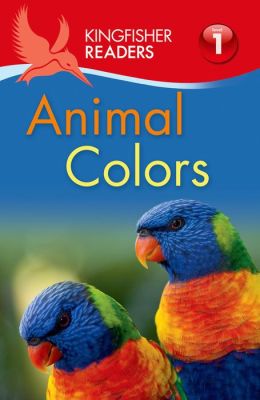

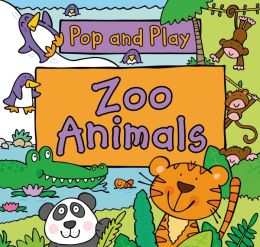

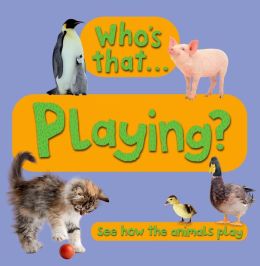
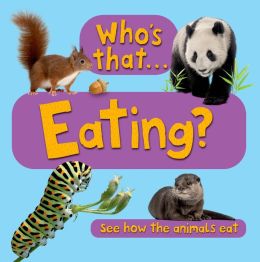
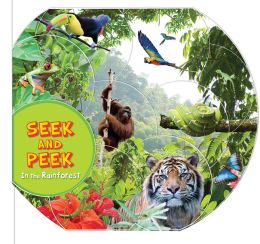




Celebrations uplift spirit, and gifts simply fuel the celebration spirit further. Brilliantly crafted floral artistic works, food items to bring a tasty treat, showpieces to showcase your taste for creativity-all waiting at www.rakhitouk.in your visit. Just drive in and get your glittering gift ideas to Send Rakhi to UK
Cakes are the most important preparatory element for the occasions like birthdays, weddings, anniversaries. Send Cakes to Gurgaon with services provided by www.cakedeliveryingurgaon.com that will allow you to send gifts even within same day.